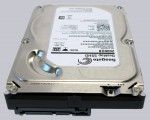
Let us continue with the benchmark results. SATA3 drives are currently tested with an ASRock 890GX Extreme3 motherboard. At present, Microsoft Windows 7 Ultimate Edition is used as the operating system.
The SSHD drive speed was examined and compared with the following benchmark software:
AS SSD Benchmark 1.4.3704.27281 – Download
ATTO Disk Benchmark v2.46 – Download
CrystalDiskMark 3.00 – Download
HD Tach 3.040 – Download
SiSoftware Sandra 2011 – Download
The SSHD benchmark values offers a very good reference point of the maximal possible reading and writing performance, the speed with smaller files and the respective access time. However, ASSSD is not intended for platter hard drives, so we have skipped this test.
The ATTO disk benchmark values gives a very good overview about the write and read rate on different file sizes. Here you can see the very constant read and write speeds with approximately 168 MB/s at a small size of about 16 KB and only slightly differences in AHCI mode.
Here is a Snipping screenshot of the ATTO Disk benchmark values (SATA3 IDE):
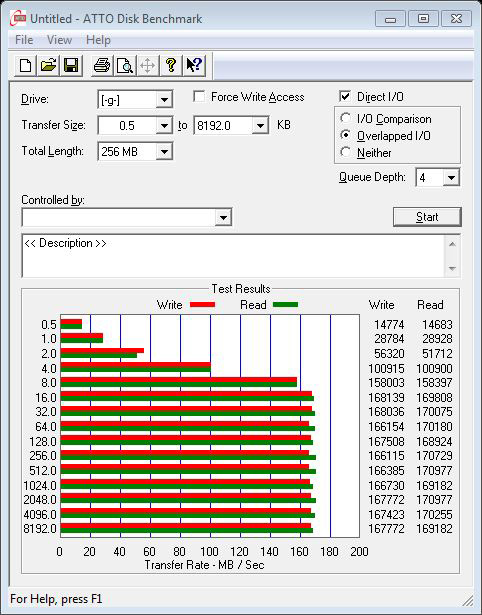
Here is a Snipping screenshot of the ATTO Disk benchmark values (SATA3 AHCI):
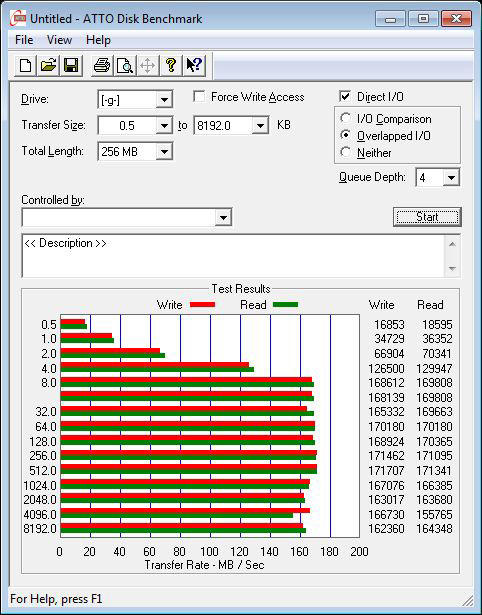
The ATTO disk benchmark values are compared with a small transfer size of 32KB and a large transfer size of 8192KB.
The bar chart already includes a comparison to a Hitachi Deskstar 7K1000.C 1TB hard drive and some Crucial, OCZ, Mach Extreme and ADATA SSDs, where the Seagate is in both transfer sizes well below most other SSDs. The Hitachi Deskstar 7K1000.C 1TB hard drive is in direct comparison with approximately 126 MB/s at 64 KB transfer sizes below the transfer speed of the Seagate 2 TB desktop SSHD (approx. 170 MB/s at 64 KB).
Here is a comparison of the ATTO disk benchmark values, which are getting updated with soon coming drives:
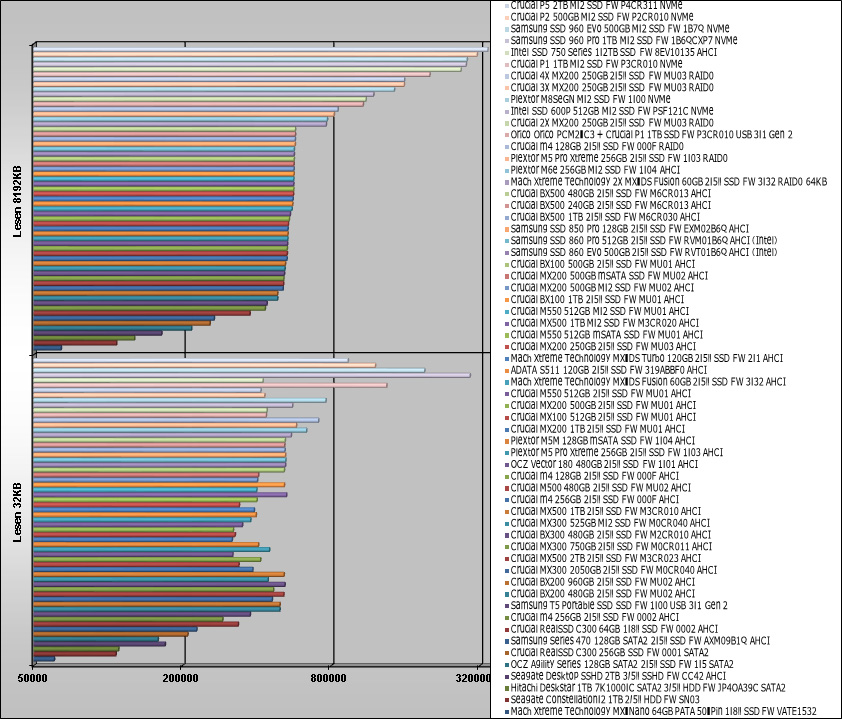
With CrystalDiskMark one receives a balanced measurement of the performance with different transfer sizes.
The CrystalDiskMark values show similar results as with ATTO and underlines the sequential read and write speed of 161-165 MB/s. As like a conventional SSD especially the important 4K QD32 reading result is significantly improved in AHCI mode.
Here is a Snipping screenshot of the CrystalDiskMark values (SATA3):
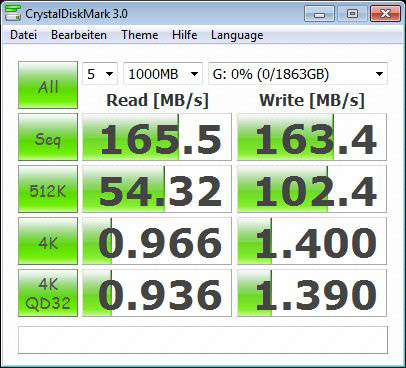
Here is a Snipping screenshot of the CrystalDiskMark values (SATA3 AHCI):
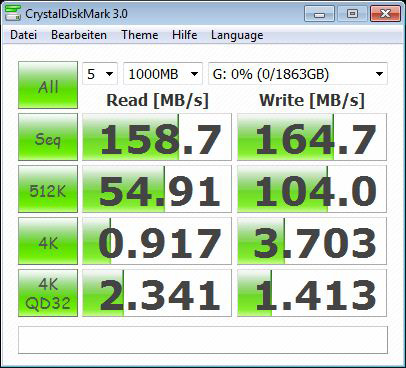
The following diagram shows the CrystalDiskMark results once again compared with other HDDs and platter drives, which are extended step by step. In the CrystalDiskMark comparison one can see the differences between the previously tested solid state drives and hard disks clearly, where the Seagate 2 TB SSHD is at the lower range with its read and write performance.
Here is a comparison of the CrystalDiskMark values, which are getting updated with soon coming drives:
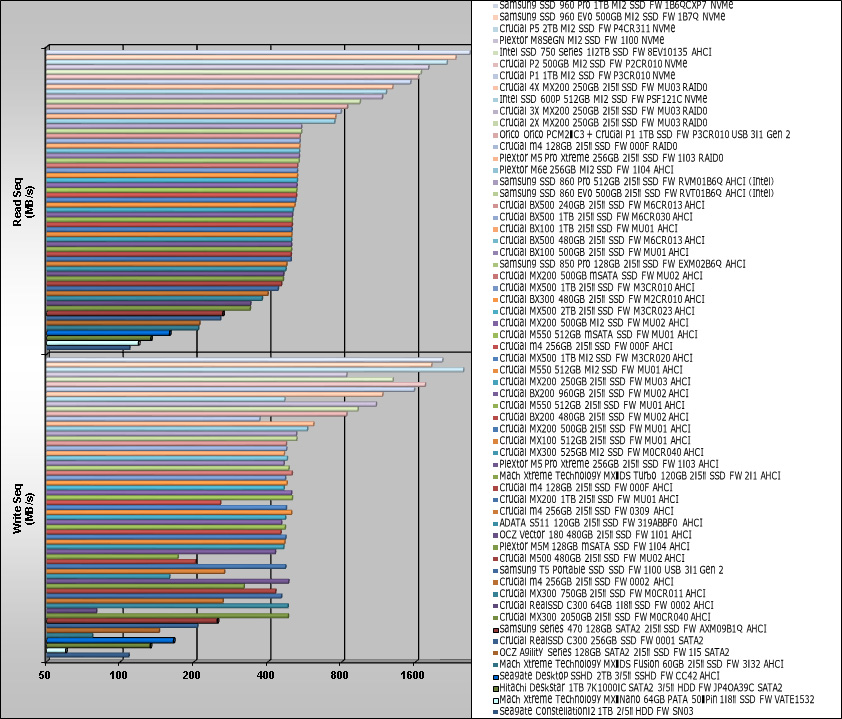
With HD Tach one can measure the gradient of the performance, but the SSHD transfer is not comparable with a conventional HDD. Here, you get among other things a very good comparison to a SSD, which has nearly constant results. For technical reasons hard drives results falls from the beginning to the end of the drive. The Seagate 2 TB SSHD shows only minor performance drops during the HD Tach benchmark and offers even at the slowest point approx. 90-100 MB/s read and write rates. For the burst speed, the SATA3 interface helps for a high transfer rate of 324,7 MB/s. The average access time is thanks to the extra NAND Flash with 0.5ms well below a normal hard drive (approx. 10-16ms) at the level of an SSD. To compare these results you can move the mouse over the following drives to see their respective benchmark results:Seagate 2TB 2.5″ SSHD at SATA3, Seagate 2TB 2.5″ SSHD at SATA3 AHCI, ADATA S511 120GB SSD at SATA3 AHCI, ADATA S511 120GB SSD at SATA3 AHCI, 2x Crucial m4 128GB 2.5″ SSD at SATA3 RAID, Crucial m4 128GB 2.5″ SSD at SATA3 AHCI, Crucial m4 128GB 2.5″ SSD at SATA3, Crucial m4 256GB 2.5″ SSD FW 000F at SATA3 AHCI, Crucial m4 256GB 2.5″ SSD FW 0309 at SATA3 AHCI, Crucial m4 256GB 2.5″ SSD FW 0002 at SATA3 AHCI, Crucial m4 256GB SSD FW 0309 at SATA3 IDE, Crucial m4 256GB 2.5″ SSD FW 0002 at SATA3, Crucial M500 480GB 2.5″ SSD at SATA3 AHCI, Crucial C300 64GB 1,8″ SSD at SATA3, Crucial RealSSD 256GB 2.5″ SSD at SATA3, Crucial RealSSD 256GB 2.5″ SSD at SATA2, Hitachi 7K1000.C 1TB HDD, MX-DS Fusion 60GB SSD SATA3 IDE, MX-DS Fusion 60GB SSD SATA3 IDE, MX-DS Turbo 120GB SSD at SATA3 AHCI, OCZ Agility 128GB SSD, 2x Plextor M5 Pro Xtreme 256GB 2.5″ SSD at SATA3 RAID0, Plextor M5 Pro Xtreme 256GB 2.5″ SSD at SATA3 AHCI, Samsung Series470 128GB SSD AHCI, Samsung Series470 128GB SSD Legacy IDE, Seagate Constellation.2 1TB 2.5″ HDD at SATA3, Toshiba MK8007GAH 1.8″ hard disk drive.
Here is a Snipping screenhot of the HD Tach benchmark values:
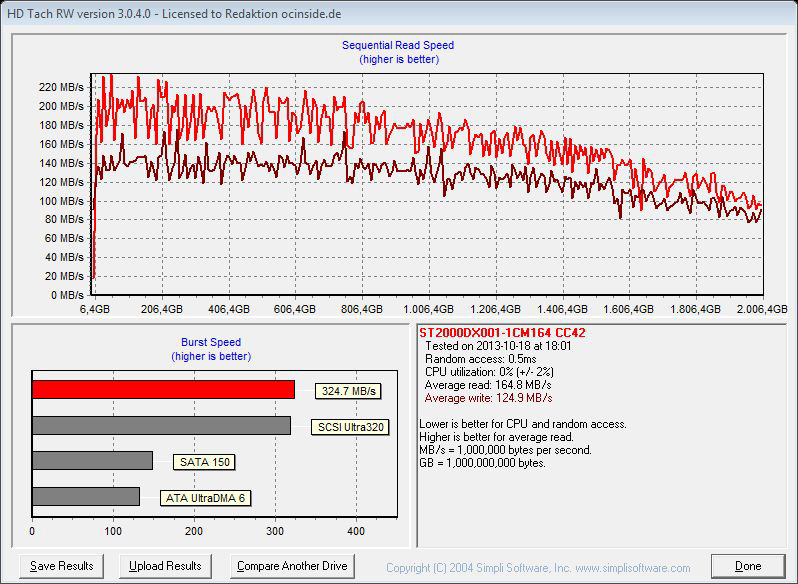
The comparison of HD Tach benchmark results shows in reading speed that the Seagate 2TB SSHD unfortunately can not keep up with the fast SSDs, but at least it is so far at the top of the hard disks.
Here is an impressive comparison of the HD Tach benchmark values, which are getting updated with soon coming drives:

SiSoftware Sandra benchmark result
Of course, SiSoftware Sandra benchmark should not be missing in this test series. SiSoftware offers with their SiSoft Sandra program a very comprehensive tool, which contains a lot of tools to get very reliable test results of all hardware components.
The average access time of the Seagate 2TB SSHD measured also in SiSoftware Sandra approx. 15.31ms and the drive index achieved a very good 156.58 MB/s for a hard drive.
Here is a Snipping screenshot of the SiSoftware Sandra benchmark read performance (SATA3):

Here is a Snipping screenshot of the SiSoftware Sandra benchmark read performance (SATA3 AHCI):

The average access time of the Seagate 2 TB SSHD has with the SiSoftware Sandra writing measurement a surprisingly low value of 0.351ms and the drive index reached 153.6 MB/s.
Here is a Snipping screenshot of the SiSoftware Sandra benchmark write performance (SATA3):

Here is a Snipping screenshot of the SiSoftware Sandra benchmark write performance (SATA3 AHCI):

Here is a comparison of the SiSoftware Sandra benchmark values, which are getting updated with soon coming drives:


